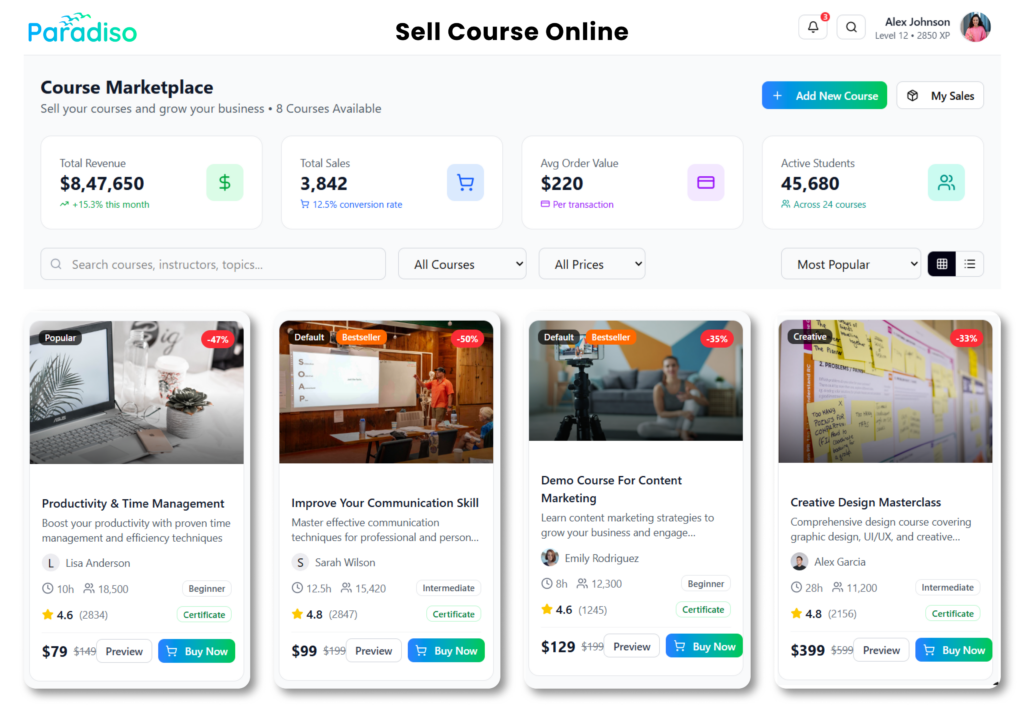Creating an online course effectively proves one’s expertise and knowledge in a particular field. It is a valuable tool for entrepreneurs, experts, and thought leaders. Teaching a topic demonstrates their understanding and skills and can be used as a lead-generating and money-making tool. This article provides an overview of the ten significant stages of creating an online course, including turning knowledge into a lead-generating, money-making, and impact-creating tool.
1.Picking a suitable course topic: The first step in creating an online course is choosing a topic that is relevant, interesting, and in demand. This will ensure that there is an audience for your course and that you are passionate about teaching the subject matter.
2.Checking the market demand for the course idea: Before investing time and resources into creating a course, it is important to research the market demand for the course topic. This can be done by looking at search data and analyzing the competition to ensure a market for your course.
3.Developing attractive and convincing learning outcomes: The learning outcomes of a course should be clear and compelling, outlining what a student can expect to learn from the course. This will help attract potential students and ensure they understand the value of the course.
4.Gathering and organizing course content: Once the course topic is chosen, the next step is to gather and organize the course content. This includes researching and creating materials such as presentations, worksheets, and quizzes to support the course.
5.Planning the course structure and modules: The course structure should be well-organized and easy to follow for the students. It should be divided into modules that build on each other and progress logically.
6.Choosing the best delivery methods for each lesson: Different delivery methods, such as video lectures, webinars, and quizzes, can make the course more engaging and effective. The delivery method should be chosen based on each lesson’s content and learning objectives.
7.Filming, recording, and editing the course material: Once the course content is ready, it needs to be recorded and edited. This includes filming video lectures, recording audio, and editing to create a polished final product.
8.Setting up an online platform for the course: An online platform, such as a website or learning management system, is needed to host the course and provide access to students.
9.Determining the pricing for the course and incorporating it into a larger business model: The pricing of the course should be determined based on its value and competition and incorporated into a larger business model if available.
10.Launching and promoting the course continuously: Once it is ready, it should be launched and constantly promoted to attract students and ensure its success. This includes using various marketing strategies such as social media, email campaigns, and SEO.
Benefits of creating a course using Paradiso Coursecart
Creating an online course using Paradiso CourseCart can benefit course creators. Some of the features and benefits of using this platform include the following:
- Easy course creation: It has an intuitive process that allows course creators to upload and organize their content.
- Customizable course design: Paradiso CourseCart offers various design options to help course creators create a professional and engaging course.
- Built-in marketing tools: This platform includes built-in marketing tools to help promote and sell courses, including creating landing pages and email campaigns and tracking student engagement.
- Secure and reliable hosting: Paradiso CourseCart offers secure and reliable hosting for courses, ensuring they are accessible to students at all times.
- Advanced analytics: It provides advanced analytics to help course creators understand how their courses perform, including student engagement and progress.
- Flexible monetization options: The platform offers a range of monetization options, including the ability to sell courses on a one-time or subscription basis and to offer coupon codes.
- Integrated payment gateway: Paradiso CourseCart has inbuilt payment gateways that make it easy for course creators to collect payments and manage their finances.
- Collaborative features: The platform offers collaborative features that enable course creators to work with other instructors and co-create and co-teach a course.
Overall, using Paradiso CourseCart to create an online course can help course creators streamline the course creation process, reach a larger audience, and increase their revenue potential.
Final Thoughts:
Creating a successful online course takes a lot of effort, but by following the steps outlined in this blog post, you can increase your chances of success. By developing a clear target audience and learning objectives, creating high-quality content, and promoting your course effectively, you can create an online course that is both valuable and engaging for your students.













